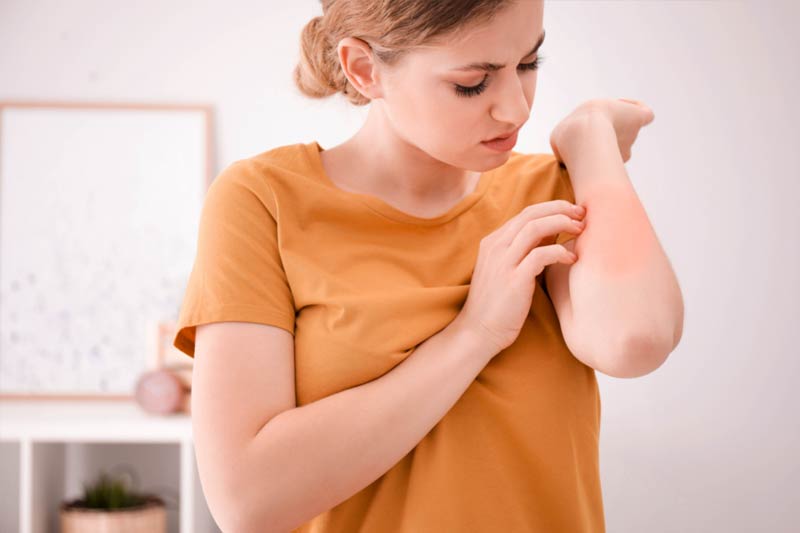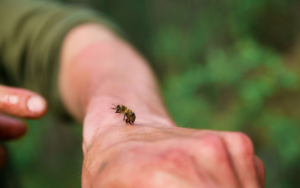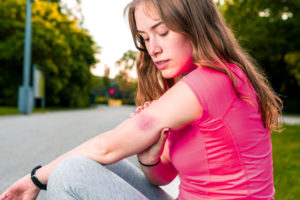Bee stings are painful. The symptoms are as expected for many people: pain with a little swelling and itchiness at the sting site. Within a few hours, perhaps with a couple of over-the-counter treatments, the discomfort is so minimal that they can resume their normal daily activities. But what if you encounter something different? You aren’t alone if you experience a bee sting swelling days later. It’s essential to understand why this could happen to you, though.
Learn why swelling can happen days after a bee sting.
Two Types of Reactions
Any allergic reaction to a bee sting should be taken seriously. There is a chance that your next sting reaction could be more severe. That being said, there are two types of allergic reactions, and one is less of a concern than the other.
Large Local Reactions and Bee Sting Swelling Days Later
Large local reactions are defined by their symptoms occurring at the site of the sting. These symptoms are still more intense than a non-allergic reaction, but thankfully, they are contained. A local reaction can produce very uncomfortable pain, itching, and swelling. Some of this swelling can be delayed, increasing over 24 to 48 hours.3
It may take 3 to 10 days for these symptoms to resolve.3 Pay close attention to your body’s responses and even write down what you experience. Depending on the severity, you should follow up with a local medical professional to determine your risk for a severe allergic reaction.


Find a Local Allergist
If you think you have a bee sting allergy, don’t wait for an emergency. Instead, talk to an allergist about testing and venom immunotherapy.
Systemic Reactions and Bee Sting Swelling Days Later
Systemic reactions produce symptoms throughout your body. For example, you could develop hives and stomach pain. More seriously, you could experience difficulty breathing or cardiac arrest. A systemic reaction points to a severe bee sting allergy and should be treated immediately. If you suspect you are having a severe allergic reaction, call 911.
A severe allergic reaction usually comes on very quickly. However, occasionally there can be a relapse 6 -11 hours later.11 Make sure you have the proper medical attention you need after a severe systemic response.
MONITOR BEE STING SWELLING & FOLLOW UP WITH A LOCAL DOCTOR
You can take two necessary steps to care for yourself after a bad reaction to a bee sting: monitor your symptoms and follow up with a local medical professional. Especially if you are experiencing significant swelling, you should make your doctor aware. It’s better to over-communicate and advocate for your care than to brush symptoms under the rug! Let them know the details, including your bee sting swelling days later. Do what you need to be safe.






